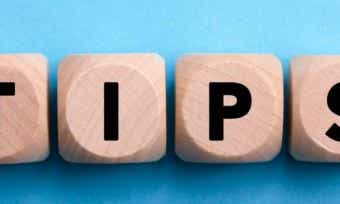Whether you feel like your debts are out of control or you have a few small debts you want to get rid of then it is time to take action and dump that debt.
Here are 11 steps that can help you become debt free:
1. Get motivated
Money stress might be affecting your health and limiting your ability to think clearly. Make a commitment to change your life.
2. Choose a reward for getting out of debt
Place a photo of that reward on your refrigerator door. You need to have something to look forward to that spurs you on and gets you excited (be reasonable, a local holiday can come later).
3. Get a buddy
It’s harder to do this on your own. Ask a close friend, a work colleague, a family member or someone else who fits the bill to have weekly check-ins with you to give you some accountability.
4. Set up an emergency fund
Having even $1,000 stashed away can reduce your reliance on credit if unexpected expenses pop up. You should then consider cutting up your credit cards and reducing the limits as you pay them off. From then on shop only with cash or a debit card.
5. Create a list of all your debts
Include details about who you owe the money to, what the money was spent on, the amount you owe, the current repayment amount, the interest rate and the final payment date. This will help you know where you stand so that you can then take the following steps to help clear your debts.
6. Negotiate your repayments
Visit or phone your lending institutions and say that you are looking for a better deal and ask what they can offer you. If you are not happy with their response simply say you are “thinking of paying off and closing your loan or credit card account(s)”. They will most likely then start offering you a better deal.
If you are experiencing financial difficulty then be upfront about it as your lender may be able to offer you some respite. You may be able to negotiate repayment plans with lower interest rates and repayment amounts.
7. Consider consolidating your debts
Where appropriate, consider consolidating multiple smaller high-interest rate debts into one larger low-interest rate loan. This may be a personal loan or your home loan.
You may consider applying for a 0% credit card balance transfer offer to save interest. Most banks offer these, but be aware that all applications for credit are listed on your credit history and impact your credit score.
→ Related article: Weighing up your debt consolidation options – what are the pros and cons?
Update your list of debts if you have finished this step.
8. Look for ways to cut back costs
Negotiate better deals on essential services such as phone and electricity. Also think about how you may be able to reduce other costs, for example cancel subscriptions that are non-essential such as Netflix, Foxtel etc.
9. Automate your recovery
Now you have reduced your outflows as much as possible, make your recovery happen automatically and easily. Factor in your debt repayments into your budget as an expense that you need to put aside each pay. It’s a good idea to then arrange for that to be transferred to a separate “bills” account.
10. Try to make some extra cash
Consider selling what you do not need. It’s not uncommon to save more in interest than what you lose selling something at a loss, so this is something you may want to keep in mind.
Put the proceeds from what you sell towards paying off your highest interest rate debt.
Also look for opportunities to generate more income. Some ideas include taking in a boarder, working extra hours or shifts, looking for a second job, giving lessons in something you are good at, or even making strawberry jam to sell at the local markets. Get creative and you could increase your income.
→ Related article: 20 side hustle ideas to help you make money
11. Make a debt repayment plan
There are two common repayment plans often recommended – the snowball and the avalanche. Let’s take a look at how these work.
Snowball method
With the snowball method you pour any surplus cash into paying off your smallest debt first and then when that debt is paid off, add (or snowball) that repayment onto the next smallest debt until it is also paid off. Continue this process, always adding the repayments from the paid-off debts to the next smallest debt until all debts are cleared.

Avalanche method
This involves pouring any surplus cash into paying off your highest interest rate debt first and when you’ve paid that debt off, add that repayment onto the next highest interest rate debt until it is paid off. Continue this process, always adding the repayments from the paid-off loans to the next highest interest rate loans until your debt repayment is complete.
These two methods look very similar. The point of difference between the two is whether you should tackle the smallest debt first or the highest interest rate debt first.
Mathematically tackling the highest interest rate debt first will save you more money so the avalanche method is a better option financially and is my preferred option. The snowball method has emotional benefits that some feel outweigh the financial benefits.
It’s important to do something special each time you achieve a goal (such as paying off a debt), so in the month after a debt is paid off you might want to take some of the repayment money that is now spare and reward yourself, but be sure to then add the full amount to your highest interest rate debt repayment thereafter.
Main image source: William Potter (Shutterstock)
 About David Wright
About David Wright
David Wright is founder of the Spending Planners Institute and Succeed with Money, a website which aims to help people with their day-to-day finances. He is also the co-host of the podcast series Succeed with Money. You can follow David on LinkedIn.


 About
About 




Share this article